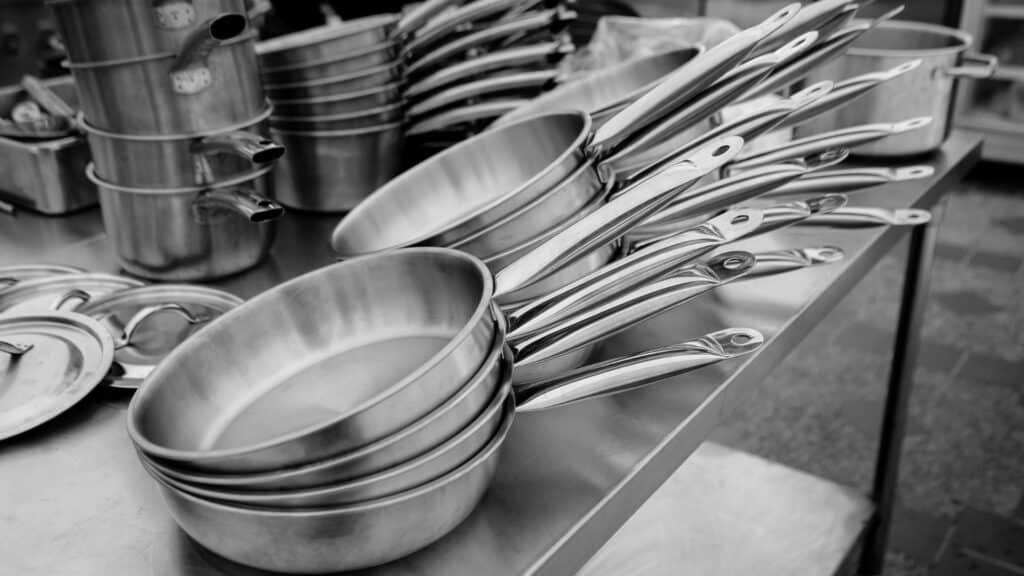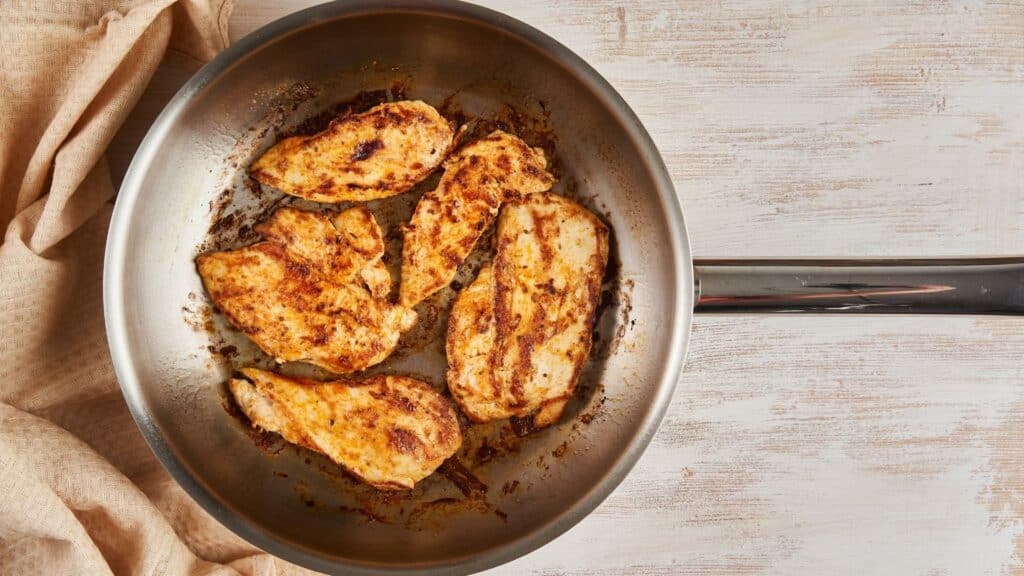You’ve seen professional chefs do it all the time – putting their pans inside a hot oven.
Is it safe for you to do the same thing? Are you going to ruin your stainless-steel pans and pots? And how do I know if my pans are safe to put in the oven?
In this article, we’re gonna talk about what kind of stainless steel can be put in the oven. Not only that, but we’ll also talk about the main advantages and disadvantages to using stainless steel to cook with.
Is Stainless Steel Oven-safe?

Stainless steel is a type of alloy that is widely used in cooking pots, pans and oven-safe containers because of its heat-resistant and corrosion-resistant properties. Since the material also does not react with acid (or base), it is also used in making surgical instruments.
Yes, stainless steel is oven-safe. However, you must keep in mind that when placed inside an oven, the cookware, or cookware container will become very hot, so handle it with care. You can also opt to use stainless steel cookware that are marked with an oven-safe label.
Does stainless steel rust?
Stainless steel does not rust. However, the material may corrode or stain when exposed to certain substances or chemicals (for example, salt pitting). To prevent corrosion, you must clean stainless steel thoroughly with a non-abrasive cleaner.
Does stainless steel stain?
Stainless steel does not stain easily, but when it does, it is usually due to improper cleaning, such as the use of abrasive cleansers and scrubbers. Also, the material can be stained if exposed to acidic substances or chemicals. To clean stainless steel properly, always use a non-abrasive cleanser.
Is stainless steel dishwasher safe?
Yes, stainless steel is dishwasher safe. However, it is not recommended to wash it in hot water or to use cleaning solutions with harsh chemicals. The dishwasher’s high water pressure and high temperatures may damage the cookware over time and warp it.
Can I put stainless steel in the freezer?
Yes, you can store stainless steel in the freezer as long as the container or cookware is marked with “freezer-safe” or “freezer-compatible” on the label. However, never leave stainless steel in the freezer for too long, or it may crack and warp.
What Type of Stainless Steel Can Be Used in the Oven

Stainless steel is a type of steel that resists corrosion and rust. It is durable, and it machines well and lends itself well to uses involving fasteners, cutlery, kitchen utensils, cookware, etc. However, this does not mean any type of stainless steel can be used in the oven. There are several types of stainless steel that is oven-safe:
Type 304 – This is a common grade of stainless steel used for cookware, cutlery, etc. It is the most used type of steel for kitchen utensils and cookware because it is easier to maintain and cooks well. Type 304 steel is magnetic and unsuitable for use in the oven because it reacts with the intense heat of baking.
Type 310 – This type of stainless steel is used for very high temperatures. Type 310 is heat-resistant and resists corrosion. It is also corrosion resistant and does not rust easily. However, it is not recommended for use in ovens because it reacts with the intense heat of baking.
Type 316 – this stainless steel is non-magnetic and retains its shine even after prolonged exposure to corrosive elements. However, it is not recommended for use in ovens because it reacts with the intense heat of baking.
The Benefits of Stainless Steel

Stainless steel is a material composed of iron, chromium, and nickel used in a variety of applications. It is resistant to corrosion and stains, making it ideal for residential and commercial use. When scratched, the material is only superficial and shows no signs of corrosion. Stainless steel is durable, doesn’t dent easily, and is easy to maintain.
Stainless steel can be used for sinks, countertops, tables, appliances, and sinks. It is resistant to fire, heat, rust and rust, making it an ideal material for commercial kitchens. It’s also easy to clean and maintain—just wipe it down with warm soapy water, and it’s ready to have a meal or cup of coffee.
Stainless steel is aesthetically pleasing and visually appealing—it has a reflective quality that looks good in both residential and commercial applications. It’s a versatile material that can be used for both indoor and outdoor applications—the material can withstand extreme temperatures and weather conditions. Also, because it is resistant to corrosion and scratches, it’s scratch and damage resistant.
Stainless steel is hygienic because of the material’s resistance to bacteria, virus, and fungi—it doesn’t absorb germs and doesn’t get damaged easily from bacteria. This makes it an ideal material for hospitals and kitchens.
Because stainless steel is durable and easy to clean and maintain, it doesn’t require much maintenance, which saves time and money. Speaking of money, it’s also a cost-effective material—it doesn’t crack, chip or peel easily, making it last longer than other materials for its price. It’s also non-toxic and eco-friendly—it doesn’t emit harmful substances into the atmosphere.
The Disadvantages of Stainless Steel

Stainless steel is an incredibly durable material that can withstand extreme temperatures, chemical corrosion, and abrasive forces. This makes it an ideal choice for cookware and other kitchen tools, as well as architectural applications. However, despite its remarkable durability and strength, stainless steel is not without flaws. Here are the three disadvantages of stainless steel you should be aware of.
Uneven heat – Stainless steel is an excellent conductor of heat, but the material conducts heat unevenly, which can lead to burning of food in some spots. This becomes a problem because food cooked over high heat develops a charred appearance, which may affect the taste.
They require frequent cleaning – Stainless steel is resistant to stains and bacteria, but it’s not immune to stains and dirt—so the material must be cleaned regularly. This can be quite a hassle, especially if you’re a busy preparing a meal for the entire family. Also, stainless steel loses its shine overtime and if you want pans that are always pleasing to look at, they might need some maintenance every so often.
It can be expensive – Stainless steel in itself is not the most expensive of materials, but to make it effective for cooking, companies typically create multi-layered pans. Usually by sandwiching a layer of aluminum, which heats very evenly, between two layers of stainless steel. This longer process makes the pans pricier to produce, making them also more expensive for the consumer.
Final Thoughts
Stainless steel is a very durable and sturdy material with a remarkable ability to resist corrosion and rust. It’s frequently used in architectural applications like tools and railings because of its strength and durability. Stainless steel doesn’t just offer durability—it also looks great, saves time and money, and is easy to maintain.
